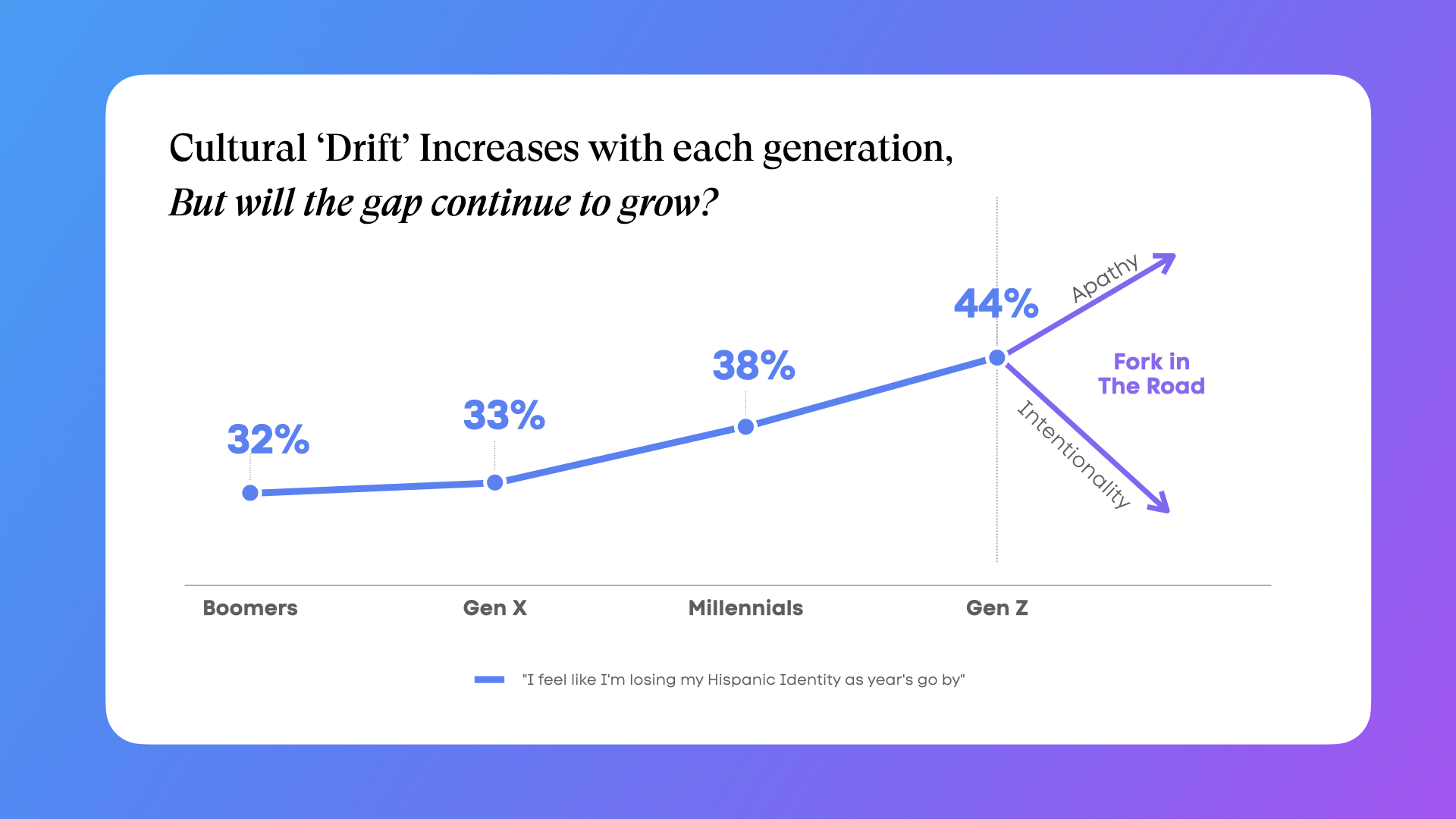
When Bad Bunny released Debí Tirar Más Fotos, he didn’t just chart globally—he struck a generational nerve. For many young Latinos in the U.S., the album offered something far more urgent than hit songs: a sense of cultural clarity. Y llego cuando más se necesitaba (it arrived when it was needed most).
As Latino identity becomes increasingly fragmented across generations, DTMF landed like a wake-up call. With lyrics entirely in Spanish and deep references to Puerto Rican genres like salsa, plena, and jíbaro, the album made no effort to cater to the current U.S. mainstream—and yet it soared to the top of global charts. No pop features. No English-language hook. No cultural compromise.
This wasn’t a crossover. It was a reclamation. Un reconocimiento.
The Era of Cultural Disconnection
Today’s Gen Z Latinos are coming of age in a cultural no-man’s land. With 94% of Latinos under 18 now U.S.-born (U.S. Census), many are navigating a disorienting mix of cultural pride and assimilation fatigue. Spanish is spoken less at home. Traditions feel distant. Identity feels fragmented.
There’s a term for it—“cultural identity crisis”—and it’s not rare. Many young Latinos are fluent in the code-switch of modern American life but increasingly estranged from their roots. DTMF didn’t solve that crisis, but it did something arguably more important: it named it. It gave listeners permission to feel the ache—and a reason to go back.

Bad Bunny’s Own Journey Mirrors His Audience’s
Even Bad Bunny hasn’t been immune to cultural drift. Fans questioned his proximity to American celebrity culture, particularly during highly publicized relationships that stirred conversations about appropriation. But instead of doubling down on fame, he retreated to Puerto Rico—and started writing. “Me hacia demasiado falta” (I missed it too much), he said in an interview with ‘The Cut’. The result was an album that sounded like home: full of coquí frogs, backseat reggaetón, and intergenerational longing.
The message was clear: even global icons can drift. But culture, when honored, always welcomes you back.
“De aqui nadie me saca de aqui yo no me muevo / Dile que esta es mi casa, donde nacio mi abuelo / Yo soy de P fuckin’ R” (Lyrics from ‘La Mudanza’ in DTMF)
“From here no one can take me, from here no one can move me / Tell them this is my house, where my grandfather was born / I’m from P fuckin’ R” (Direct Translation)
Two Paths: Apathy or Intention
Young Latinos are now facing a fork in the road:
- Apathy is easier. It’s silent. It avoids hard questions about language fluency or forgotten traditions. But it’s also what leads to the erasure of cultural memory—one unasked story, one unspoken idiom, one less call to your abuela.
- Intentionality is harder—but essential. It means dancing even when you don’t know the steps. It means picking up the phone and asking a relative about the past. It means reclaiming Spanglish, not as a flaw, but as a feature of bicultural fluency.
According to MRI Simmons, two-thirds of Millennial and Gen Z Latinos say they want to feel closer to their roots. The desire is there. What’s needed now is action.

Why Brands Should Be Paying Attention
The implications go far beyond music. According to Nielsen, Latino consumers represent $2.7 trillion in buying power—a 444% increase since 2000. And yet, multicultural media investment remains staggeringly low. In the 2000s, brands celebrated a “Latin pop boom” .by increasing ad spend from 1.5% to 3%. Today? It’s only 4%.
Meanwhile, by 2035, one in three young Americans will identify as Latino. Brands that fail to meaningfully connect with this audience today will find themselves out of step—and out of relevance—tomorrow.
Bad Bunny’s album is a case study in authenticity as strategy. He didn’t dilute. He doubled down. And the world listened.
The Future of Latinidad Is Intentional
Latino identity is no longer just inherited—it’s being redefined in real time. The cultural fork in the road is clear: erasure through indifference, or preservation through action. Debí Tirar Más Fotos reminds us of what’s possible when artists—and audiences—choose the latter. It’s not just about nostalgia. It’s about evolution. And for brands that understand that? There’s real opportunity on the other side of authenticity.






